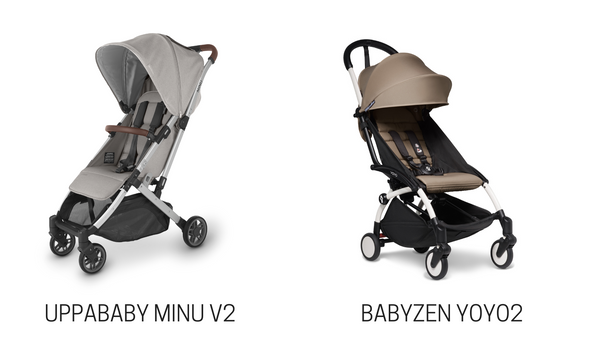How to Carry a Car Seat: Expert Tips and Techniques

Carrying a car seat can seem tricky at first. But with the right approach, it’s simple and safe.
Learning the best way to carry a car seat ensures both comfort and safety for you and your baby. Car seats are essential for every parent. They protect your child while traveling. But moving them can be a challenge. Many parents struggle with the weight and awkward shape.
Carrying it correctly prevents back strain and keeps your baby secure. In this guide, we’ll explore simple techniques for carrying a car seat comfortably. These tips will help reduce discomfort and make your life easier. Let’s make carrying a car seat stress-free and efficient. Ready to dive in? Let’s get started!
Choosing The Right Car Seat
Choosing the right car seat is crucial for your child’s safety and comfort. With so many options available, making the right choice can feel overwhelming. The key is understanding what suits your child’s needs and meets safety regulations. Let’s break down the essential aspects to consider.
Types Of Car Seats
Car seats come in various types, each designed for specific age groups and weights.
- Infant Car Seats: These are perfect for newborns up to about 2 years old. They are rear-facing and offer maximum protection for the youngest passengers.
- Convertible Car Seats: Versatile and cost-effective, these seats can transition from rear-facing for infants to forward-facing for toddlers.
- Booster Seats: Ideal for older children who have outgrown forward-facing seats, booster seats position the seat belt correctly on a child’s lap and shoulder.
Have you ever found yourself juggling through these options, unsure of which fits your family best? Consider your child’s age, weight, and height when deciding.
Safety Standards
Safety should never be compromised. Car seats must adhere to strict safety standards to ensure your child’s protection.
Check for the latest certifications. Look for labels indicating compliance with federal safety regulations. This ensures the car seat has passed rigorous crash tests.
Did you know that even the most expensive car seat might not be the safest if it doesn’t fit your car properly? Always test the car seat in your vehicle before purchasing.
Think about the installation process. Is it straightforward and secure? A car seat must be easy to install correctly every time.
Your child’s safety is paramount. Make informed choices that reflect their needs. Are you confident in your choice? Let the safety standards guide you to peace of mind.

Credit: www.goodhousekeeping.com
Preparing For Installation
Preparing for installation is crucial for car seat safety. Ensure the seat fits and functions well. This involves several steps to guarantee a secure installation. Follow these guidelines to make the process smooth.
Checking Compatibility
Start by checking compatibility with your car. Not all seats fit every vehicle. Measure the space available in your car. Ensure the seat fits without blocking other seats or doors. Consider the type of seatbelt your car has. Some seats need specific belt types for security. Look for seats that match your car’s specifications. Compatibility ensures safety and ease of use.
Reading The Manual
The manual is your best friend during installation. Read it thoroughly before starting. It provides step-by-step instructions. Understand the seat’s features and limitations. Manuals explain how to secure the seat correctly. They also offer troubleshooting tips for common issues. Follow the guidelines to avoid mistakes. Proper understanding leads to safer installations.
Positioning The Car Seat
Carrying a car seat requires proper positioning for safety and comfort. Hold the handle with both hands. Keep the seat close to your body to avoid strain.
Positioning your car seat correctly is crucial for your child’s safety and comfort. Choosing between front and rear-facing positions can feel overwhelming, especially if you’re a new parent. However, understanding the differences and benefits of each position helps you make an informed decision. Let’s dive into the specifics and ensure your little one’s journey is as safe as possible.Front Vs Rear-facing
The decision between front and rear-facing can be daunting. Rear-facing seats offer better protection for infants, supporting their head, neck, and spine. Experts recommend keeping your child rear-facing until at least age two, or until they reach the seat’s height and weight limits.Front-facing seats provide more freedom and visibility for older toddlers. Transitioning to this position is a milestone, but timing is key. Always prioritize your child’s safety over convenience.Optimal Seat Position
Where you place the car seat in your vehicle can impact safety. The middle of the back seat is generally the safest position, away from airbags and side impacts. This spot might be a tight fit, but its safety benefits are worth the effort.Ensure the seat is properly secured. A loose seat can compromise safety during sudden stops or accidents. Follow the manufacturer’s instructions and check for movement; the seat should not move more than an inch side-to-side or front-to-back.Have you considered getting your car seat professionally checked? Many local fire stations or police departments offer free inspections to ensure your seat is installed correctly. Taking advantage of these services can offer peace of mind. You’re ensuring the safest ride possible for your little one.
Credit: www.goodhousekeeping.com
Securing The Car Seat
Securing a car seat properly is crucial for a child’s safety. Understanding the techniques ensures peace of mind during travel. Different methods exist to secure car seats effectively. Explore these methods to keep your little one safe on the road.
Using Seat Belts
Seat belts are a common way to secure car seats. Ensure the seat belt passes through the designated slots. Pull the belt tight to eliminate slack. Lock the belt to keep the car seat stable. Double-check the buckle for a secure fit. Regularly inspect the belt’s condition for wear.
Latch System Techniques
The LATCH system offers an alternative to seat belts. Locate the anchors between the car seat cushions. Attach the connectors to the anchors securely. Tighten the straps until the seat is snug. Ensure the seat doesn’t wobble or shift. Test the seat’s stability with a firm push. Confirm the LATCH system’s compatibility with your vehicle.
Adjusting Straps And Harness
Adjusting straps and harness ensures a secure fit, making it easier to carry a car seat safely. Proper adjustment distributes weight evenly, reducing strain on your back and shoulders. Comfortable carrying depends on snug yet flexible straps, allowing seamless movement.
Adjusting the straps and harness of a car seat is crucial for your child’s safety during travel. This seemingly small step can make a big difference in ensuring your child’s comfort and protection. It’s a task that might seem daunting at first, but with a bit of practice and guidance, it becomes second nature. Have you ever wondered if you’ve secured the car seat properly? Let’s dive into some practical steps you can take to ensure everything is adjusted correctly.Correct Strap Placement
The position of the straps is vital for the safety of your child. Straps should be placed at or just below your child’s shoulders when rear-facing. For forward-facing seats, they should be at or above the shoulders. This ensures that in the event of sudden stops or accidents, the pressure is distributed safely across your child’s body. Remember that the chest clip should be at armpit level—not too high or too low.Harness Tightness Tips
Achieving the right harness tightness is crucial. The harness should be snug enough that you cannot pinch any excess strap at the shoulder. This ensures that your child is secured tightly without causing discomfort. A simple way to test this is using the “pinch test.” Try pinching the strap at the shoulder; if you can pinch any fabric, it needs to be tightened. This step is essential as a loose harness can fail to protect your child in a crash.Adjusting the car seat straps and harness might seem like a small detail, but it can have a significant impact. Reflect on your usual routine—are you confident you’re doing it right? By following these straightforward steps, you can travel knowing your child is safely secured.
Credit: ascentchiropractic.com
Carrying The Car Seat Safely
Carrying a car seat safely is crucial for every parent. Proper handling ensures your child’s safety and your comfort. Understand the techniques to lift and carry without strain. Avoid common pitfalls that could lead to mishaps. This guide will help you carry a car seat with ease.
Lifting Techniques
Always bend your knees when lifting the car seat. Use your leg muscles to lift, not your back. Hold the seat close to your body for better balance. Keep your back straight to avoid injury. Gripping the handle firmly gives you control. Make sure the seat is empty before lifting.
Avoiding Common Mistakes
Never carry the seat with one hand. It can tilt and become unstable. Avoid swinging the seat while walking. This can be dangerous for your child. Check that the seat is secured before lifting. Ensure straps are tight and fastened. Do not rush while carrying. Take slow and steady steps.
Traveling With A Car Seat
Transporting a car seat requires careful planning for ease and safety. Consider using a car seat travel bag or strap for convenience. These tools make carrying bulky seats through airports or public transport less stressful, ensuring protection and comfort for your child.
Traveling with a car seat can feel like a logistical challenge, but it doesn’t have to be. Whether you’re flying across the country or hitting the open road, a little preparation can make the process seamless. Let’s explore some key considerations to ensure your car seat arrives safely, and stress-free.Air Travel Considerations
When flying, check with your airline about their specific car seat policies. Some airlines allow you to bring your car seat on board if you’ve purchased a seat for your child. This not only keeps your little one safe but also gives them a familiar place to sit.Consider using a car seat travel bag. It protects the seat from damage and makes it easier to carry through the airport. Some bags even come with wheels or backpack straps, freeing your hands for other luggage or, more importantly, holding your child’s hand.Think about your destination. Will you need the car seat immediately upon landing? If yes, gate-checking might be your best option. This allows you to use it until you board the plane and have it ready as soon as you disembark.Road Trip Preparations
Before hitting the road, ensure your car seat is properly installed. A well-secured car seat is crucial for safety and peace of mind. Double-check the seat’s manual or consult a certified technician if needed.Pack strategically. Keep essentials within arm’s reach, such as snacks, toys, and wipes. A well-packed car can make the difference between a smooth journey and a series of unnecessary stops.Plan your breaks wisely. Long drives can be tiresome for little ones. Schedule regular breaks to let them stretch and play. This not only helps them burn off energy but also reduces the chances of a meltdown.Have you ever found yourself struggling with a car seat in a crowded airport or a tight parking lot? Taking these steps can save you time and stress, allowing you to focus on making memories with your family instead.Maintaining Your Car Seat
Properly carrying a car seat ensures safety and ease. Hold the seat by its handle or base, keeping your posture upright. Avoid bending or twisting to prevent discomfort and ensure secure transport.
Maintaining your car seat is crucial for safety and hygiene. A well-maintained car seat ensures your child’s safety during every ride. Keeping it clean and regularly checking for issues extends its life. Let’s explore how to maintain your car seat effectively.Cleaning Tips
Regular cleaning keeps your car seat fresh and hygienic. First, check the manufacturer’s manual for cleaning instructions. Use a mild detergent and warm water for washable covers. Avoid harsh chemicals that can damage the fabric. Clean any spills immediately to prevent stains. Vacuum the crevices to remove crumbs and debris. This prevents mold and unpleasant odors. Regular cleaning also helps maintain the seat’s appearance.Regular Safety Checks
Safety checks ensure your car seat functions properly. Inspect the harness for wear and tear. Ensure all straps are secure and untangled. Check the buckle for proper locking. Examine the seat for cracks or other damage. Make sure it is properly installed in your vehicle. Follow the manufacturer’s guidelines for weight and height limits. These checks help keep your child safe during every journey.Frequently Asked Questions
How Do You Hand Carry A Car Seat?
Carry a car seat by gripping its handle securely. Use both hands for balance and comfort. Ensure the seat is empty before lifting. Adjust your grip as needed to avoid strain. Keep the seat close to your body for better control and safety.
What Is The Best Way To Transport A Car Seat?
Use a sturdy box to transport a car seat. Secure it with packing materials to prevent movement. Ensure the seat is clean and disassembled if necessary. Label the box clearly for identification. Consider using a protective cover for added safety during transit.
How To Hold A Car Seat While Walking?
Hold the car seat with the handle facing upward. Use both hands for stability and support. Keep your back straight and distribute the weight evenly. Walk carefully, watching your steps to avoid obstacles. Consider using a stroller or car seat carrier for convenience and comfort during longer distances.
What Is The 2 Hour Car Seat Rule?
The 2-hour car seat rule advises limiting a baby’s time in a car seat to two hours. Extended sitting can affect breathing and spinal development. Regular breaks ensure safety and comfort for the infant during travel.
How Do You Safely Carry A Car Seat?
Ensure the handle is locked. Hold close to your body. Use both hands for stability.
Conclusion
Carrying a car seat doesn’t have to be hard. Use the tips shared here. They make it simpler and safer. Remember to check the seat’s balance. Hold it securely to avoid drops. Adjust your grip for comfort. Practice makes perfect, so try different methods.
Keep safety in mind always. A secure hold means a safe journey. Share these tips with others. Help them carry car seats confidently. With these steps, you can handle car seats with ease. Make travel safer for your child. Enjoy peace of mind knowing they’re secure.







